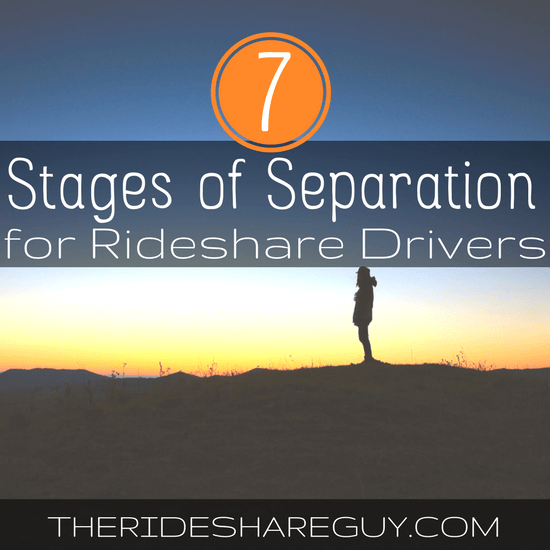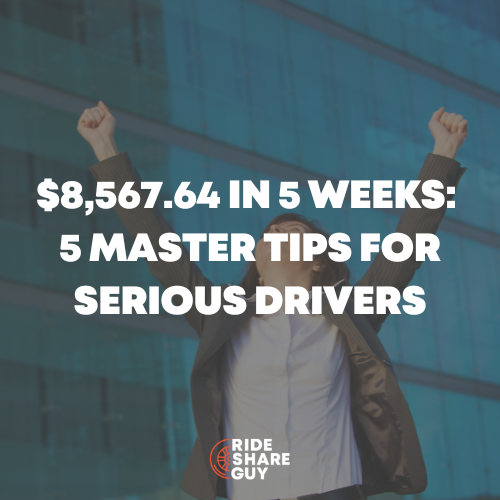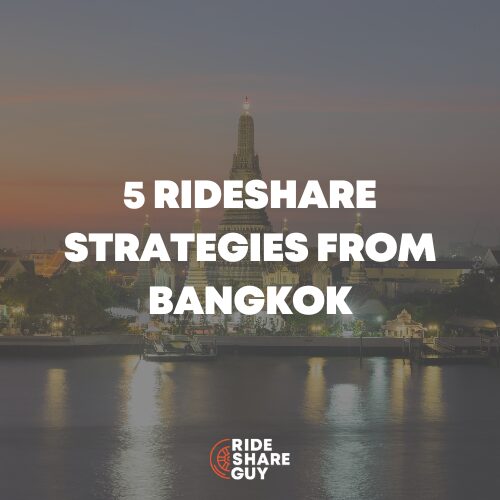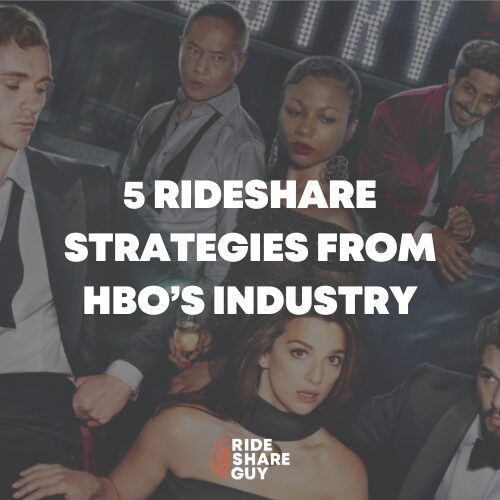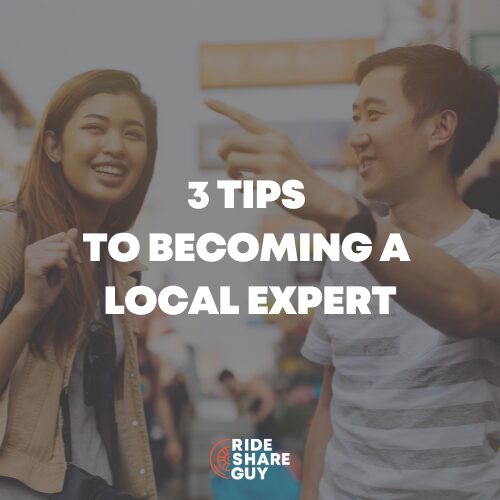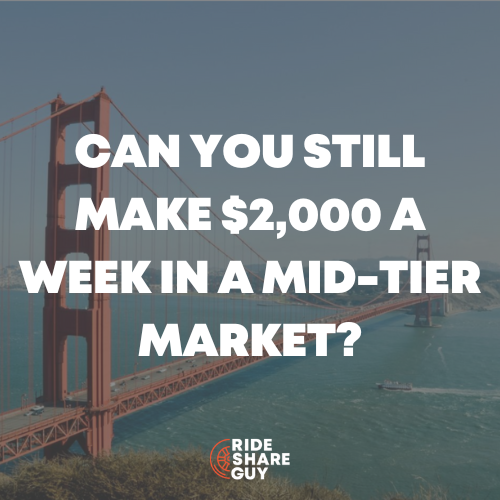Harry here. There’s no doubt that driving for Uber and Lyft is a good job for some, but a lot of drivers do end up quitting – there’s no getting around that. Today, senior RSG contributor John Ince takes a look at why so many drivers quit and what are the different stages that can lead to separation.
Well over a year ago, driver churn data from Uber leaked out, which indicated that within a year, over half of all drivers have become inactive or quit. I suspect that number is much higher now, with price cuts over the last few years and other well-documented sources of driver dissatisfaction.
This blog generally provides support to those who are still driving. However, you may be considering, have considered, or are temporarily sitting out on rideshare driving for various reasons. So I thought it appropriate to offer some support to the afflicted – those who are still driving but who are on the path to separation.
After 3 years and thousands of rides behind the wheel, patterns have emerged. I can see them reflected not only in my attitude toward the app, but also in the comments on the driver message boards. It’s now pretty easy to tell where most drivers are in their evolution by the tone and tenor of their words.
Angry drivers are most likely experienced drivers. They’re the ones who have absorbed multiple body blows from the rideshare experience. They’ve been dinged unfairly by more than their share of passengers. They’re the ones who have seen inflated promises from Uber / Lyft melt before their eyes. They’re the ones who somehow muster up the stamina to keep coming back for more.
Then there are the drivers who can’t understand why so many other drivers seem so cynical about the experience. They write comments that decry the rampant negativity on the driver blogs and Facebook groups. They’re probably still in the beginning stages of their journey, unaware of what lies ahead.
It takes time to understand what’s really going on here, because there are a lot of moving parts to the rideshare experience. Both Uber and Lyft are constantly fine-tuning their offerings to drivers in reaction to the shifting sands of the competitive marketplace.
It’s all part of the learning curve. It’s part of the growth patterns of being a driver. It takes time to truly get the full scope of Uber and Lyft’s strategies vis a vis drivers. In many ways the whole ridesharing phenomenon is truly ingenious, and perhaps the most impressive aspect is how deftly they lure in new drivers. By keeping the pipeline flowing with newbies who hardly suspect anything amiss, until they start to put together the pieces of the puzzle.
So here’s my roadmap for rideshare drivers who are still trying to figure out exactly where they are in the rideshare experience:
Stage 1- Blissful Ignorance
You’ve read an Uber ad someplace and think to yourself, hey I could be making a decent income, on my own time, on my own terms. I think I’ll give this a shot. You sign up. It’s dead simple. You marvel at the technology – it’s magical.
Within weeks you’ve collected your sign up bonus and you’re stoked. You’re telling all your friends about it. This is the greatest thing since sliced bread. You can’t believe that you actually get paid for doing something that is so exciting and enjoyable.
Stage 2 – Excitement
Whenever you turn on that driver’s app you feel an adrenaline rush. You’re meeting new people and having great conversations. Your passengers really seem to appreciate the cookies you offer them when they get in the car. You spend your time between rides buffing your car so it looks super nice. You study Google maps at night trying to learn from your navigation mistakes during the day’s driving. You keep checking your ratings and are pretty darn proud of your 4.94 average over your first 100 rides. This stage can last from a few days to a few months.
Stage 3 – First Rumblings of Discontent
It usually starts fairly innocuously. You think you gave a good ride and had a cool conversation yet inexplicably your ratings have dropped rather precipitously. You do a mental scan of your rides trying to sleuth out who the offending passenger is. The whole process starts to consume you with self recriminations and suspicion. Who dinged me? Why? What did I do wrong?
Stage 4 – Growing Awareness
One day you see an article in the press that Uber drivers aren’t making as much money as advertised so you decide to do a quick spreadsheet to calculate of your expenses and hourly take. Geez … gas is more expensive than I thought. I forgot to deduct what I’m shelling out in tolls. Suddenly, it hits you – you’re not making as much as you thought you were. That big repair bill or the new set of tires or the new brakes all hit you at once. But it takes awhile for it all to sink in, so you keep driving, hoping for that super surge at the end of the night.
Stage 5 – Second Wind
If half of all Uber drivers have gone off the platform within a year, that also means that half are still driving. Why? For many it’s simple necessity. You have to pay the rent. There’s no choice in the matter.
But there’s also a realization that although many of Uber’s promises were hollow, it’s also not that bad a gig as a stopgap, so you stay in the race. Sometimes you’re buoyed by a nice $500 referral bonus from a friend who finally completed 100 trips. Sometimes it’s a long ride with a huge surge that unexpectedly nets you $150 bucks.
Sometimes it’s just a great conversation with a passenger who truly appreciates what you do. So you get your second wind. You keep on keeping on because it’s now an important part of your life. At times it feels kind of like a drug, but it no longer gives you an adrenaline rush it once did.
Maybe you take a few weeks or a few months off, and you go through withdrawal pains. You realize you kind of miss the rush. Your bank account is getting precariously low. What do you do for income if not Uber-ing? What do you do with your life, if you’re not behind the wheel? Until you can answer those questions, you’re still behind the wheel and there it is: you start to feel the wind at your back again – until the direction of the wind shifts.
Stage 6 – Shock and Anger
Suddenly something really bad happens that jolts you – you’re in an accident and realize Lyft’s insurance has a $2,500 deductible. Perhaps Uber stiffs you on a bonus payment because of some technicality. You end up in a marathon email exchange with Uber support – to the point where you become convinced they’re being intentionally obtuse to deny you what you’ve legitimately earned.
Maybe you get at the ride from Hell and find yourself in bitter argument with a passenger. Perhaps that passenger complains and suddenly you’ve been de-activated. Reality hits you like a ton of bricks: neither Uber nor Lyft care about you – you’re just a disposable commodity to them.
The first time this happens you dismiss it, but when it happens the second or third time, you realize that this gig cannot and should not be the center of your life. Once the shock starts to wear off, you start taking a second look at the totality of the experience.
You start to see patterns emerging in Uber / Lyft’s communications with drivers – always nice sounding words that slightly distort the truth. You realize that Travis Kalanick and his faceless investors are getting rich on the back of your labors. Suddenly it hits you like a ton of bricks – you’ve been taken advantage of – just like hundreds of thousands of other drivers who just haven’t quite figured it out yet.
Stage 7 – Resignation and Separation
You’ve finally figured out what’s happening. You totally get it. You realize that as a driver you have no power and most passengers just need a ride from you. It’s all a mercenary exchange, and you continue a few more weeks to pay the rent while you’re seriously exploring other options. You take a flyer on Caviar, or driving for Amazon, anything but what you’re doing now. Finally you take the big step away. You have no regrets. Suddenly you feel free and wonder what took you so long to cut the cord.
Readers, what do you think of this seven stages to separation from Uber and Lyft? If you quit driving, do these steps mirror the ones you took? If you’re a current rideshare driver, do you agree or disagree with these stages?
-John @ RSG
